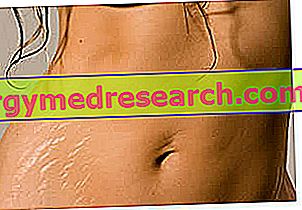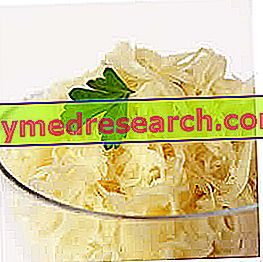
Other treatment layers
In addition to products for local use, various attempts are also made to "fill" dermal atrophy, using injective collagen, hyaluronic acid and betaglucan.
Hyaluronic acid
Hyaluronic acid (HA) is present in the extracellular matrix of the skin in high concentrations, where it exerts a protective and repairing action exhibiting a remarkable ability to bind water. HA increases where there is rapid tissue proliferation, regeneration and repair and is then synthesized when cells enter mitosis and replaced when mitosis ceases, by activating the enzyme hyaluronidase.

Betaglukane
The beta-glucan, being a powerful activator of the cutaneous immune system, both of macrophages and neutrophils, plays a cytostimulant role.
Laser
Lasers have marked an important turning point in the treatment of skin blemishes. Lasers of various types are used in the treatment of striae and seem to offer good prospects. The pulsed dye laser at 585 nm exerts a modest beneficial effect on the appearance of lesions 1 and the excimer laser at 308 nm seems to be partly effective 2. Pulsed light (IPL) has also proved useful and has minimal side effects 3 as well as the CO2 short pulsed4 laser, which acts by vaporizing the tissues: it is ideal in cases of very damaged and not very elastic skin, since it not only eliminates the most superficial layers but is also able to determine an important contraction of collagen and elastic fibers present in the dermis making the skin much more toned. Furthermore, it should be remembered that lasers and lights that emit UVB radiation have been shown to re-infuse lesions 5.
Microdermabrasion
Another recently acquired technique is microdermabrasion which, like peeling, aims to smooth the skin and may be associated with chemical treatment. It has the purpose of removing, through rubbing, small portions of skin. This is a minimally invasive operation that uses an electrical instrument in which the distension and rubbing of the skin is caused by materials of different types, an example of which is represented by Corundum crystals, an artificial diamond or, alternatively, from microgranules of aluminum hydroxide. It is performed on an outpatient basis, sometimes under local anesthesia in particularly sensitive subjects.
1 21. Jimeenez GP, Flores F, Berman B, Gunja-Smith Z. Treatment of striae rubra and striae alba with the 585 nm pulsed dye laser. Dermatol Surg 2003; 29: 362-5.
2 Alexiades-Armenakas MR, Bernstein LJ, Friedman PM, Geronemus RG. The safety and efficacy of the 308 nm excimer laser in pigment correction of hypopigmented scars and striae alba. Arch Dermatol 2004; 140: 955-60
1 Hernandez-Perez E, Colombo-Charrier E, Valencia-Ibiett E. Intense pulsed light in the treatment of striae distensae. Dermatol Surg 2002; 28: 1124-30
3 Nouri K, Romagosa R, Chartier T, Bowes L, Spencer JM. Comparison of the 585 nm pulsed dye laser and the short pulsed CO2 laser in the treatment of striae distensae in skin types IV and VI. Dermatol Surg 1999; 25: 368-70
4 Goldberg DJ, Marmur ES, Schumlts C, Hussain M, Phelps R. Histologic and ultrastuctural analysis of ultraviolet B laser and light source treatment of leukoderma in striae distensae. Dermatol Surg 2005; 31: 385-7



